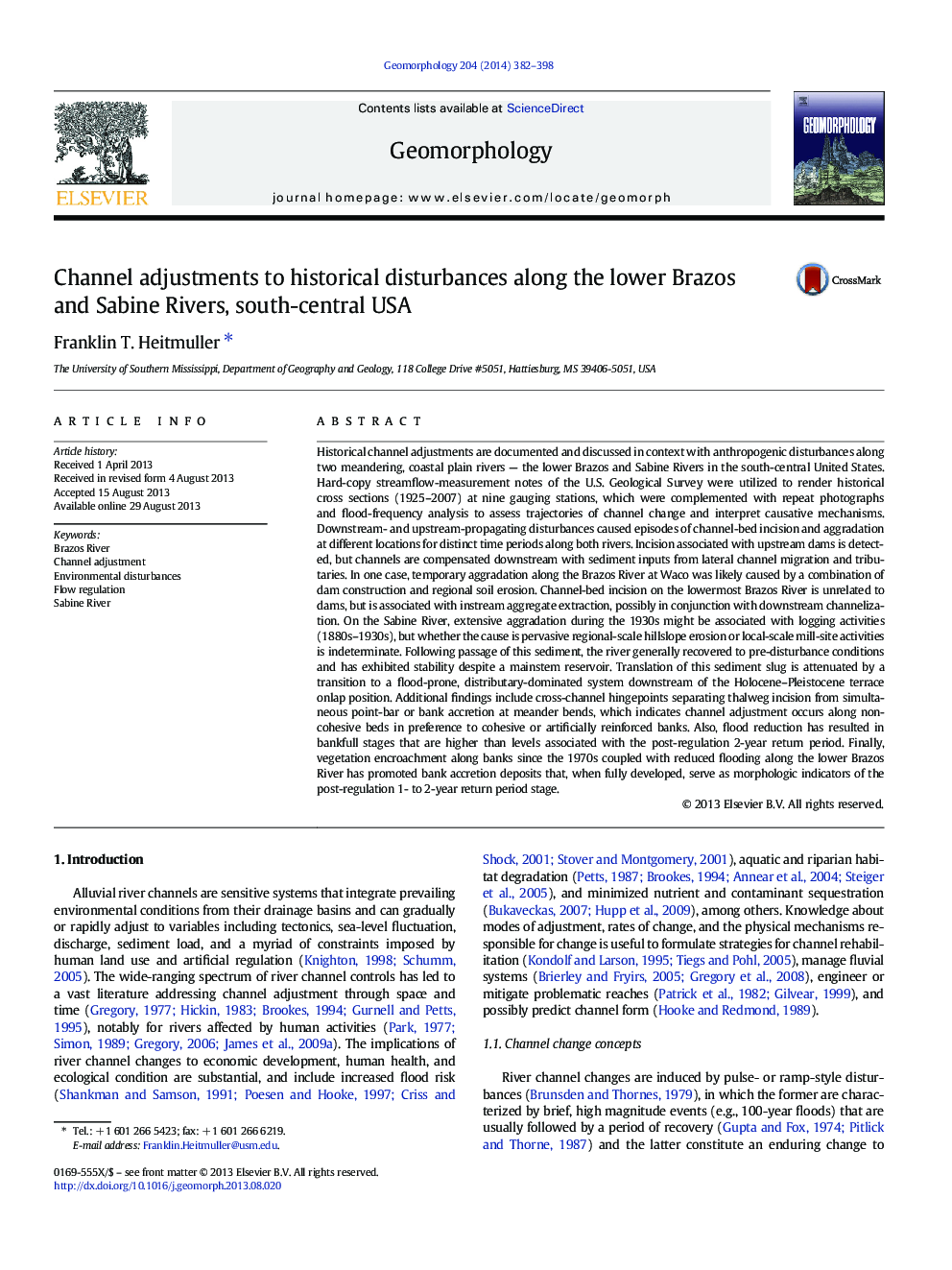| کد مقاله | کد نشریه | سال انتشار | مقاله انگلیسی | نسخه تمام متن |
|---|---|---|---|---|
| 6432752 | 1635445 | 2014 | 17 صفحه PDF | دانلود رایگان |
- Historical streamflow data were used to render channel cross sections.
- Aggradation is temporary and related to land use (e.g., logging) and construction.
- Degradation is pervasive and related to aggregate extraction and dam effects.
- Bank accretion is associated with vegetation encroachment and reduced flooding.
- Hingepoints at meander bends separate point-bar accretion from thalweg incision.
Historical channel adjustments are documented and discussed in context with anthropogenic disturbances along two meandering, coastal plain rivers - the lower Brazos and Sabine Rivers in the south-central United States. Hard-copy streamflow-measurement notes of the U.S. Geological Survey were utilized to render historical cross sections (1925-2007) at nine gauging stations, which were complemented with repeat photographs and flood-frequency analysis to assess trajectories of channel change and interpret causative mechanisms. Downstream- and upstream-propagating disturbances caused episodes of channel-bed incision and aggradation at different locations for distinct time periods along both rivers. Incision associated with upstream dams is detected, but channels are compensated downstream with sediment inputs from lateral channel migration and tributaries. In one case, temporary aggradation along the Brazos River at Waco was likely caused by a combination of dam construction and regional soil erosion. Channel-bed incision on the lowermost Brazos River is unrelated to dams, but is associated with instream aggregate extraction, possibly in conjunction with downstream channelization. On the Sabine River, extensive aggradation during the 1930s might be associated with logging activities (1880s-1930s), but whether the cause is pervasive regional-scale hillslope erosion or local-scale mill-site activities is indeterminate. Following passage of this sediment, the river generally recovered to pre-disturbance conditions and has exhibited stability despite a mainstem reservoir. Translation of this sediment slug is attenuated by a transition to a flood-prone, distributary-dominated system downstream of the Holocene-Pleistocene terrace onlap position. Additional findings include cross-channel hingepoints separating thalweg incision from simultaneous point-bar or bank accretion at meander bends, which indicates channel adjustment occurs along non-cohesive beds in preference to cohesive or artificially reinforced banks. Also, flood reduction has resulted in bankfull stages that are higher than levels associated with the post-regulation 2-year return period. Finally, vegetation encroachment along banks since the 1970s coupled with reduced flooding along the lower Brazos River has promoted bank accretion deposits that, when fully developed, serve as morphologic indicators of the post-regulation 1- to 2-year return period stage.
Journal: Geomorphology - Volume 204, 1 January 2014, Pages 382-398
